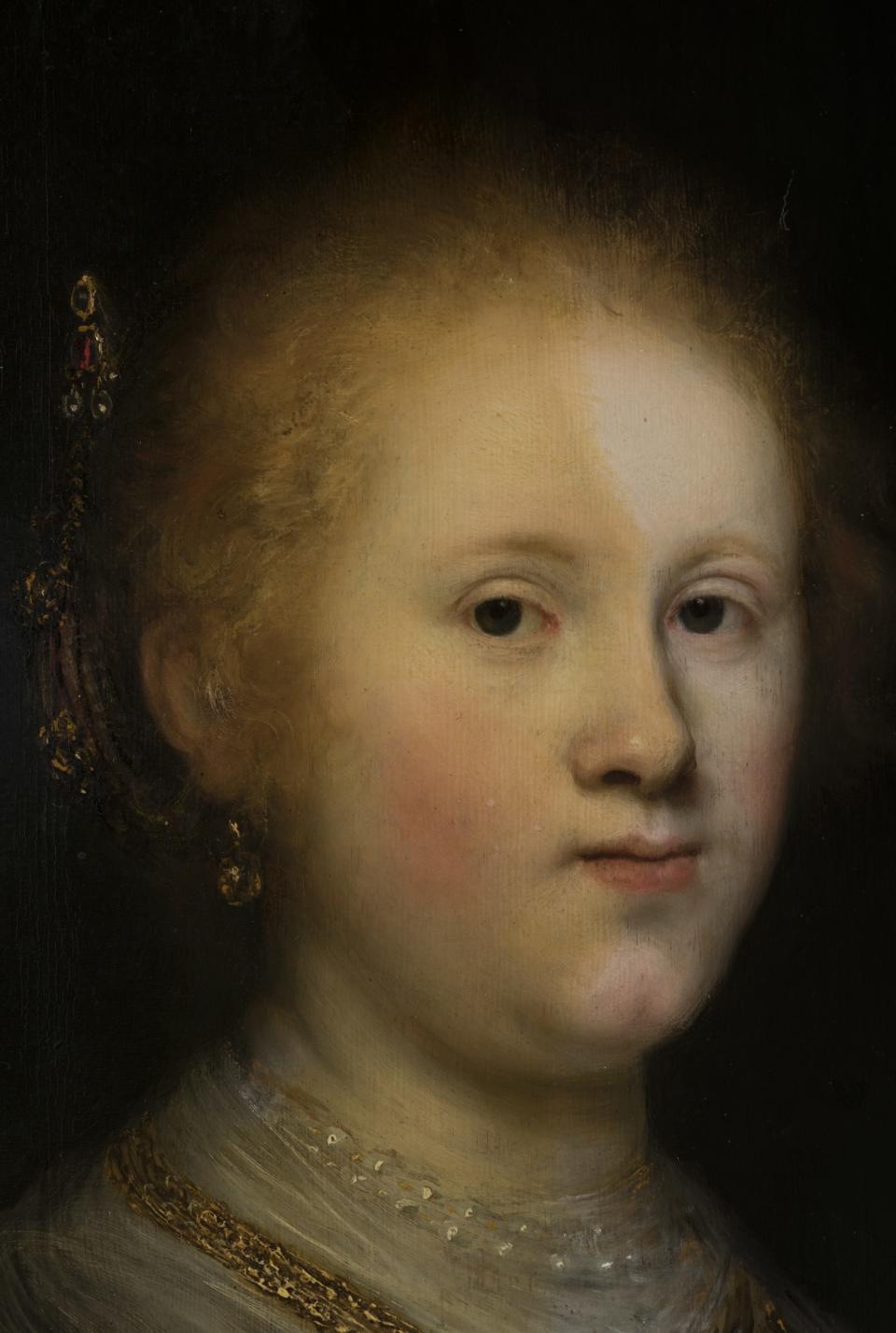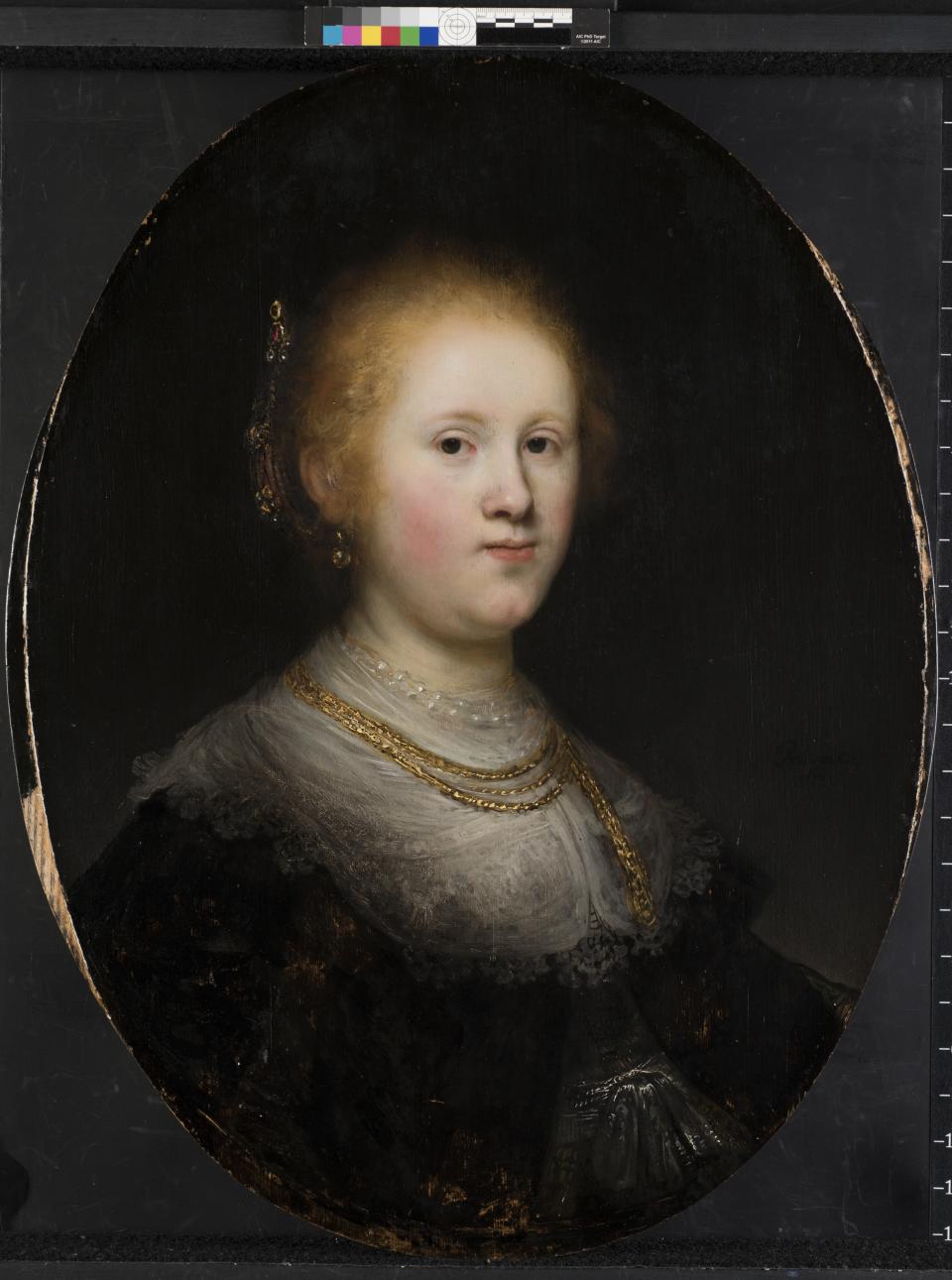A Museum Just Discovered It Has Owned a Rembrandt for Over 60 Years
In 1961, the Allentown Art Museum in Pennsylvania received a donation of more than 60 Renaissance masterpieces from the Samuel H. Kress Foundation, including a portrait by Rembrandt van Rijn’s studio. The painting, which depicts a girl with rosy cheeks, strawberry blonde hair, and a gold necklace around her neck, titled Portrait of a Young Woman (1632), was thought to have been painted by a student of the great Dutch painter, and for decades the painting hung in the gallery with a plaque ascribing it to someone from his studio. But a recent routine cleaning and further examination unveiled that the work was in fact not by an apprentice at all but from the hand of the Dutch Master himself.
In 2018, Portrait of a Young Woman was sent to New York University’s Institute of Fine Arts Conservation Center for standard treatment, when conservator Shan Kuang’s removal of several layers of varnish uncovered something striking. “To be completely clear, I neither make attributions nor authenticate,” explains Kuang to AD. “My role is to restore the painting so that it can be seen for what it is, and to carry out conservation and research.” But the varnish has to be routinely removed and replaced, and as she worked on the painting, the conservator began to see subtle alternating hues and brushwork between the layers.

As she explains it, the last time the nearly 400-year-old painting had been treated was in the 1930s, when Kress first acquired it. Taste preferences change over time, and in that period, dealers, collectors, and restorers largely preferred for paintings to have a mirror-smooth surface, devoid of texture. The restorer at the time had applied many layers of varnish and repainted the clothing in the portrait, which Kuang says is a practice that would never have been done today, as it’s a restoration faux pas. It wasn’t until the newly restored painting was evaluated by scholars and experts alike that a decision was reached to reattribute the work to Rembrandt.

The work hasn’t always been misattributed, though. In the 1970s, the Rembrandt Research Project traveled the globe to authenticate thousands of the Dutch Master’s painting. When they came upon Portrait of a Girl, the researchers deemed it to be a work by one of his assistants rather than himself, as the layers of varnish and additional paint suggested a deviation in the pattern they had seen with his other works. The technology they were using was, by today’s standards, quite outdated and limiting, and so a declaration was made that it could not have been painted by Rembrandt himself. For nearly 50 years, no other experts had looked at the painting to offer another opinion (“That’s the problem: No experts or curators really pass by Allentown,” Kuang says), until the painting was going under conservation in New York. “What Allentown did was take into consideration the judgments and opinions from art historians and scholars when deciding how to display the painting,” she says.
To celebrate the re-minted masterpiece, the Allentown Art Museum is staging an exhibition beginning June 7, where the painting will go on view.

Originally Appeared on Architectural Digest


